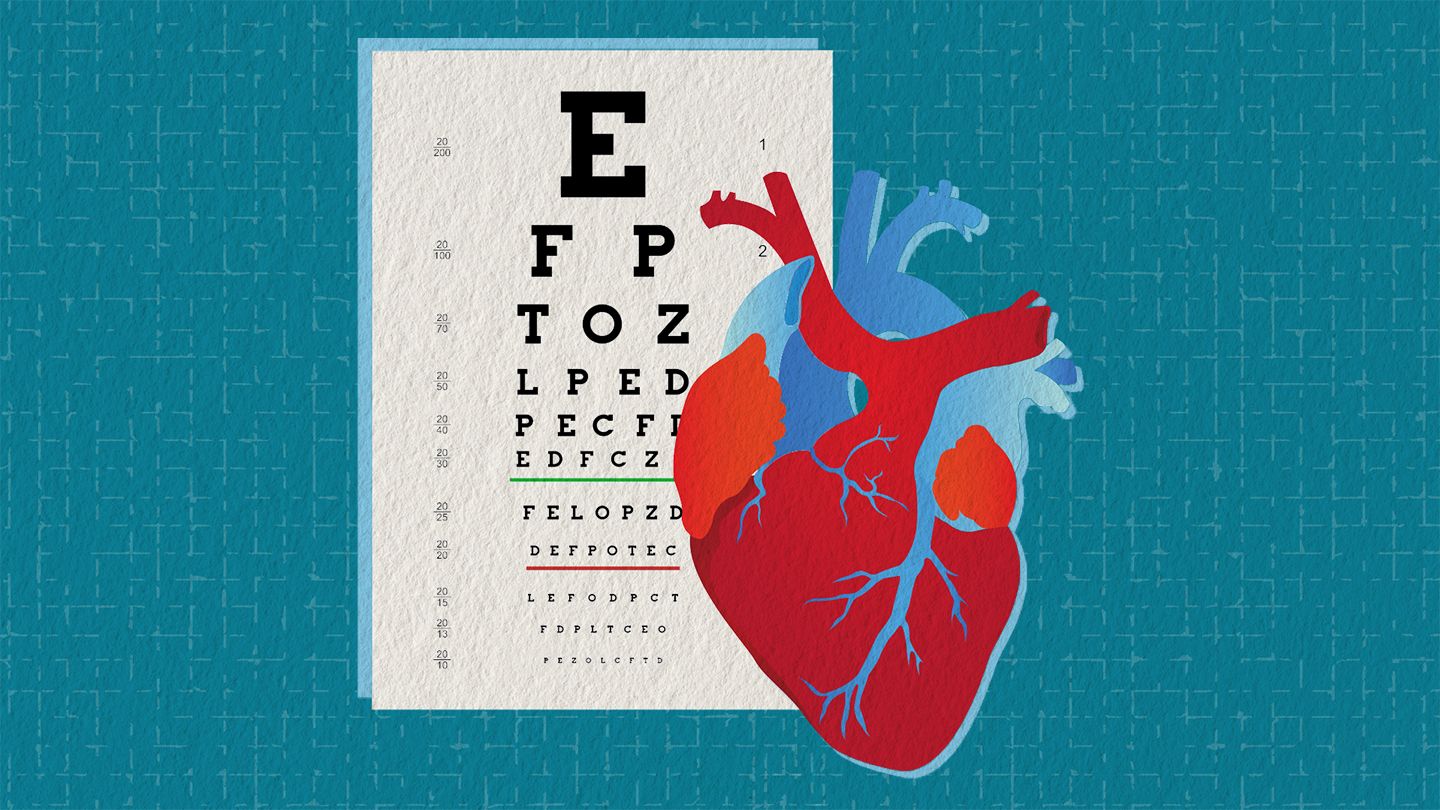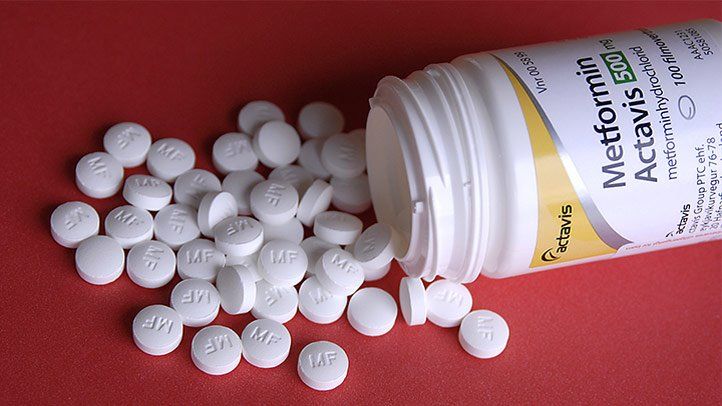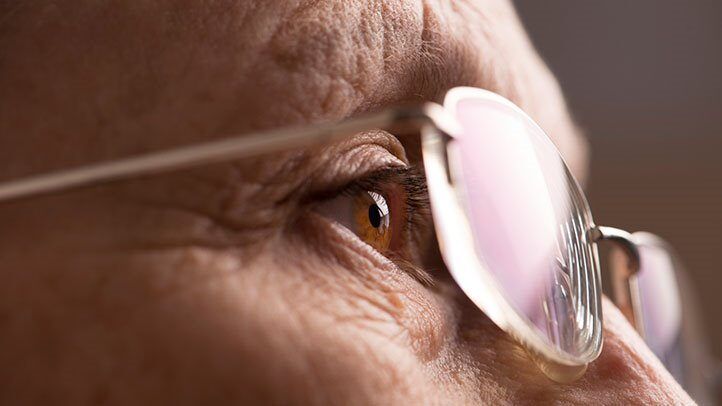Diabetic retinopathy is a form of eye disease caused by chronically high or variable blood sugar that is associated with diabetes.
“When the small blood vessels of the retina become compromised due to several years of high blood sugars, diabetic retinopathy occurs,” explains Farah Khan, MD, a physician at UW Medicine’s Diabetes Institute and an assistant professor of medicine specializing in metabolism, endocrinology, and nutrition at the University of Washington School of Medicine in Seattle. “Retinopathy is the catch-all word that encompasses any sort of damage to the retina of the eyes, which is one of the deepest tissues of the eye.”
If left untreated, diabetic retinopathy can lead to vision loss and blindness, so it’s important to get a comprehensive eye exam at least once a year if you have diabetes, according to the National Eye Institute. Getting treatment as early as possible, as well as taking steps to manage diabetes, can help prevent or delay vision problems. (1)
Signs and Symptoms of Diabetic Retinopathy
DR progresses through four stages, each of which is associated with different symptoms.
In the early stages, DR often does not have noticeable symptoms, so the disease often goes undetected until it affects vision. (1)
Bleeding from damaged blood vessels in the retina can cause you to see “floaters,” or spots that appear across your field of vision. Floaters sometimes clear on their own.


How to Avoid Complications of Diabetes
But if you experience floaters or any other type of blurred vision or vision loss and have one of the underlying conditions that can cause retinopathy, check with your doctor.
The stages of diabetic retinopathy are:
Mild nonproliferative diabetic retinopathy (NPDR) In this stage, small areas of balloon-like swelling — called microaneurysms — form in the retinal blood vessels and may leak fluid into the retina.
Moderate NPDR As the disease progresses, blood vessels that provide important nourishment to the retina may swell and lose their ability to transport blood.
During this stage, the appearance of the retina may change as a result of these symptoms. But these changes would only be visible to your eye doctor during a comprehensive eye exam.
Untreated moderate NPDR may lead to diabetic macular edema, or swelling in the macular region of the retina, which can cause serious vision loss.
Mild and moderate NPDR are sometimes grouped together as “early” DR.
Severe NPDR In this stage, the blood supply to the retina is disrupted, leading to more damage in the blood vessels.
Proliferative diabetic retinopathy (PDR) At this advanced stage of DR, the retina secretes growth factors (substances that stimulate cell growth) to generate new blood vessels.
These new blood vessels grow along the inside surface of the retina as well as in the vitreous gel, the jelly-like fluid that fills the center of the eye.
Because they’re fragile, these new blood vessels are more likely to leak and bleed, producing scar tissue that can shrink and lead to retinal detachment — the pulling away of the retina from underlying tissue. (2,3)
Causes and Risk Factors of Diabetic Retinopathy
Anyone with any type of diabetes, including type 2, type 1, or gestational, can develop diabetic retinopathy. (1)
“The longer a person has diabetes and the worse their blood sugar control is, the greater their risk of getting diabetic retinopathy,” Dr. Khan says.
The following factors may also raise your risk of developing retinopathy: (3)
- Having high cholesterol levels
- Having high blood pressure
- Becoming pregnant
- Smoking
- Being African-American, Hispanic, or Native American
How Is Diabetic Retinopathy Diagnosed?
You’ll need to undergo a comprehensive eye exam to receive a diagnosis of diabetic retinopathy.
Your pupils will be dilated with eye drops during the exam, to allow your doctor to better view the inside of your eyes.
The drops used to dilate your pupils may cause you to experience blurry vision until they wear off, which may be several hours later.
Your eye doctor will use several different instruments to examine your eyes and identify potential: (3)
- Damaged blood vessels
- Blood or fatty deposits in the retina
- New blood vessels along the inside lining of the retina
- Scar tissue in the retina
- Bleeding in the vitreous fluid
- Retinal detachment
- Optic nerve abnormalities
To take pictures of your retinas, your doctor may use fluorescein angiography, which uses a special dye that is injected into your arm.
Your doctor can use these photos of your retinas to identify damaged blood vessels.


Metformin May Help Prevent Eye Disease in People With Type 2 Diabetes
Your doctor may also use optical coherence tomography to obtain cross-sectional images of your retinas.
These images can show your doctor the thickness of the retina, which can help determine whether fluid has leaked into retinal tissue. (3)
In addition, your eye doctor may: (3)
- Test your vision
- Test you for glaucoma
- Check for the presence of cataracts (a common age-related eye disease that causes vision loss)
Duration of Diabetic Retinopathy
There is no cure for diabetic retinopathy, but there is some hope for relief. “Mild levels of [diabetic retinopathy] can be treated with careful diabetes management,” says Rishi Singh, MD, a retina specialist at the Cleveland Clinic Cole Eye Institute in Ohio. This includes a proper diet, exercise, and possibly medication, including injectable insulin. “Medical management alone can cause some regression but only in the earliest stages.” But even if diabetic retinopathy is treated, future retinal damage and vision loss may occur, since diabetes is a lifelong condition. (3)


Tips for Aging Well With Diabetes
If you have an earlier stage of diabetic retinopathy, treatment may not be needed right away and your doctor will monitor your eyes closely. Managing blood sugar appropriately can help slow or stop the progression of this eye disease. (1)
Prevention of Diabetic Retinopathy
The primary way to prevent diabetic retinopathy is to follow your prescribed diabetes treatment plan. Keeping your blood sugar within the goal range should help reduce your risk for not only diabetic retinopathy but also all types of diabetes-related complications.
“Because diabetic retinopathy is essentially irreversible, it is very important to take care of your health to prevent it from happening in the first place,” Khan says. “Good blood sugar control is crucial to preventing long-term complications such as diabetic retinopathy.”
The Centers for Disease Control and Prevention (CDC) recommends the following steps to keep your eyes healthy: (4)
- A healthy diet and regular physical activity can help control weight, blood sugar, blood pressure, and cholesterol, which can all reduce the risk of diabetic retinopathy.
- Schedule an annual comprehensive dilated-eye exam if you have diabetes. This will help ensure any problems with your vision are caught early.
- Quit smoking or if you don’t smoke, never start. Smoking cigarettes increases the risk of diabetes complications, including diabetic retinopathy.
- Contact an eye doctor immediately if you notice any changes in your vision.
Complications of Diabetic Retinopathy
Complications of diabetic retinopathy can lead to serious vision problems, including:
Vitreous hemorrhage This complication occurs when new blood vessels bleed into the vitreous fluid.
Minor vitreous hemorrhage can cause you to see floaters. With severe vitreous hemorrhage, blood can fill the vitreous cavity and completely block your vision.
This vision loss is temporary and usually clears within a few weeks or months, unless your retina is damaged.
Retinal detachment This condition develops when damaged blood vessels form scar tissue, which pulls your retina away from the back of your eye.
Retinal detachment can cause you to see floaters or flashes of light. If left untreated, it may lead to severe, permanent vision loss.


6 Eye Conditions to Watch Out For as You Age
Glaucoma DR can cause new blood vessels to grow in the front of your eye, interfering with the normal flow of fluid out of the eye and leading to a buildup of pressure.
This condition can lead to damage in the optic nerve, the bundle of nerve fibers that transmits visual information from your eye to your brain.
If left untreated, glaucoma may cause permanent blindness. (3)
African Americans and Hispanics and Diabetic Retinopathy
Certain minority groups are disproportionately affected by diabetic retinopathy. According to a 2017 review published in International Journal of Clinical Endocrinology and Metabolism, African American and Hispanic populations are 2 to 3 times more likely to develop visually significant complications from diabetes than non-Hispanic whites. (5)
An estimated 800,000 African Americans have diabetic retinopathy, and that number is projected to rise to 1.2 million by 2030, the National Eye Institute reports. (6)
One reason African Americans are at greater risk for diabetic retinopathy is that they are at an increased risk for developing diabetes, Dr. Singh says.


#BlackHealthFacts MATTER
“Furthermore, African Americans have been found to have higher levels of risk factors for retinopathy, including but not limited to duration of diabetes, HbA1C levels, obesity, and systolic blood pressure,” he says. “All of these risk factors along with the potential socioeconomic barriers to entry for treatment amongst this population is why African Americans are at greater risk for diabetic retinopathy.”
Singh emphasizes the importance of a healthy lifestyle and keeping blood sugar levels in a healthy range to prevent vision loss and other complications.
“It is important for anyone with diabetes to get an annual eye checkup to monitor for signs of [diabetic retinopathy] before it is too late and vision loss starts to set in,” he says. “By maintaining a healthy diet and keeping blood sugar and blood pressure under control, it is possible to delay or prevent the onset of [diabetic retinopathy] in diabetic patients.”
Diabetic Retinopathy Resources We Love
Favorite Orgs for Essential Info on Diabetic Retinopathy
American Foundation for the Blind
This nonprofit offers a comprehensive guide to living with diabetes and vision loss in both English and Spanish. For those who have vision troubles, free audio lectures are available on the website where you can learn about diabetes basics, as well as healthy eating and self-care tips from a certified diabetes educator.
American Diabetes Association’s (ADA) Focus on Diabetes
The ADA is considered the leading nonprofit for type 1 and type 2 diabetes education. We love how the organization’s subsite focuses on ways you can take control of your eye care, including its resource to find an eye care professional to schedule your routine eye exam.
American Academy of Ophthalmology (AAO)
The AAO is the world’s largest association of eye physicians and surgeons, and is a major advocacy organization for people with vision problems. On the site, you can watch quick, informational animations on how diabetic retinopathy affects the eye, sign up for the free newsletter for ophthalmologist-reviewed tips on preserving eye health, and plug in your ZIP code to find an eye specialist near you.
Favorite Online Support Network for Diabetic Retinopathy
VisionAware
On this blog from the American Foundation for the Blind, people from all walks of life share their stories about vision loss, how it has affected their lifestyle and relationships, and how they are managing to cope. We love having the chance to connect with others through these personal reflections, and there’s an opportunity to contribute your own story, too. You can also find a list of local in-person support groups.
Favorite Resource for Diet Advice
OnTrack Diabetes
Sticking to healthy eating habits is necessary to maintain control over your diabetes and prevent complications like vision loss, but it can often be difficult. That’s where OnTrack Diabetes comes in. The site offers hundreds of diabetes-friendly recipes created by award-winning cookbook authors Frances Towner Giedt and Bonnie Sanders Polin, PhD, that are sure to satisfy your taste buds while keeping your blood sugar in check.
Favorite Site for Diabetes Products
DiabetesNet
This website offers roundups of the latest tech products for diabetes management, including glucose monitors, insulin pens, glucagon kits, and more.
Favorite App
RetinaRisk
This app offers a clinically validated risk calculator that allows people with diabetes to assess in real time their individualized risk for developing diabetic retinopathy. This is done by collecting health measurements from the user like diabetes type, A1C, duration of diabetes, blood pressure, and gender. The data is then crunched through an algorithm to tell the patient their risk. RetinaRisk, which is free and compatible with both Android and iOS operating systems, also includes detailed guidelines and information on diabetes, diabetic retinopathy, and tips for improved self-care.
Additional reporting by Brian P. Dunleavy.
Editorial Sources and Fact-Checking
- Diabetic Retinopathy. National Eye Institute. August 3, 2019.
- What is Diabetic Retinopathy? American Academy of Ophthalmology. September 18, 2020.
- Diabetic Retinopathy Overview. Mayo Clinic. May 30, 2018.
- Diabetes and Vision Loss. Centers for Disease Control and Prevention. May 7, 2021.
- Diabetic Retinopathy: Focus on Minority Populations. International Journal of Clinical Endocrinology and Metabolism. November 11, 2017.
- African Americans With Diabetes Can Prevent Vision Loss. National Eye Institute.



































